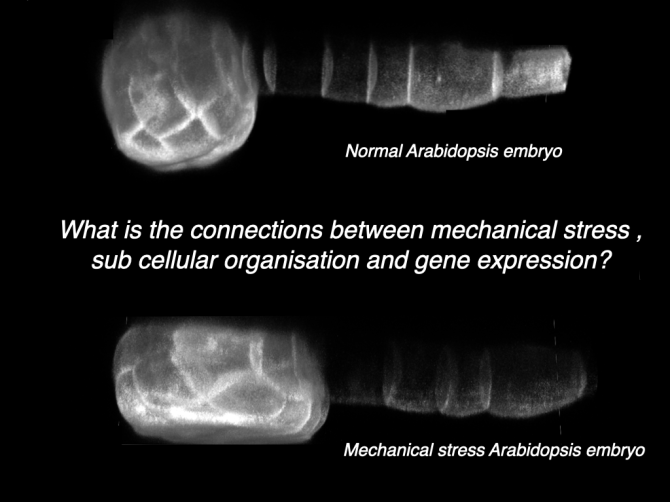
Project
How plants feel the force
In this project, we will decipher the plant mechanostat by establishing the quantitative connections between mechanical stress and gene expression. We adopt a unique vantage point that employs the early Arabidopsis embryo as a miniature plant in which mechanical feedback can be explored in an entire organism, with subcellular resolution, and in full three dimensions.
Background
Plants perceive mechanical stimuli through their cell wall. While the stimulation has been shown to affect plants’ intracellular structure, we lack an understanding of the mechanisms underlying how mechanical stimulation influences genetic reprogramming. One of the main reasons is the absence of a simple multicellular model system for mapping gene expression in response to defined mechanical stimuli. To overcome this limitation, we use the early Arabidopsis embryo as a comprehensive miniature plant model to study the connections between mechanical stress, subcellular organisation and gene expression.

Results
We developed a microfluidic device to precisely apply mechanical force on isolated embryos. Next, we develop a method to quantify the changes of cell shape and wall mechanics in embryos. As a part of our investigations, we found that two-thirds of the cell volume is deformable, showing that embryo cell wall mechanics is highly adaptable. We are now isolating RNA of mechanically stimulated embryos for acquiring whole gene expression data. The results will be further used to identify biological pathways and candidate genes influenced by mechanical stimulation.
Contact
Do you have a question about plants and mechanical stimulation, or would you like to join us as a student researcher? Please contact us.